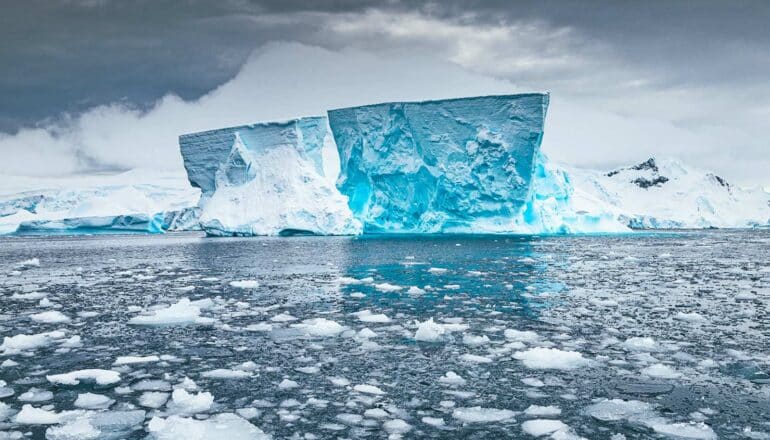
Human-induced environmental changes around Antarctica are contributing to sea level rise in the North Atlantic, a new study finds.
The research team analyzed two decades of deep sea oceanographic data collected by observational mooring programs to show that a critical piece of Earth’s global system of ocean currents in the North Atlantic has weakened by about 12% over the past two decades.
“Although these regions are tens of thousands of miles away from each other and abyssal areas are a few miles below the ocean surface, our results reinforce the notion that even the most remote areas of the world’s oceans are not untouched by human activity,” says Tiago Biló, an assistant scientist at the University of Miami’s Rosenstiel School’s NOAA Cooperative Institute for Marine and Atmospheric Studies, and lead author of the study published in Nature Geoscience.
As part of the NOAA-funded project DeepT (Innovative analysis of deep and abyssal temperatures from bottom-moored instrument), the scientists analyzed data from several observational programs to study changes over time in a cold, dense, and deep water mass located at depths greater than 4,000 meters (2.5 miles) below the ocean surface that flow from the Southern Ocean northward and eventually upwells to shallower depths in other parts of the global ocean such as the North Atlantic.
This shrinking deep-ocean branch—that scientists call the abyssal limb—is part of the Atlantic Meridional Overturning Circulation (AMOC), a three-dimensional system of ocean currents that act as a “conveyer belt” to distribute heat, nutrients, and carbon dioxide across the world’s oceans.
This near-bottom branch is comprised of Antarctic bottom water, which forms from the cooling of seawater in the Southern Ocean around Antarctica during winter months.
Among the different formation mechanisms of this bottom water, perhaps the most important is the so-called brine rejection, a process that occurs when salty water freezes. As sea ice forms, it releases salt into the surrounding water, increasing its density. This dense water sinks to the ocean floor, creating a cold, dense water layer that spreads northward to fill all three ocean basins—the Indian, Pacific, and Atlantic oceans.
During the 21st century, the researchers observed that the flow of this Antarctic layer across 16°N latitude in the Atlantic had slowed down, reducing the inflow of cold waters to higher latitudes, and leading to warming of waters in the deep ocean.
“The areas affected by this warming spans thousands of miles in the north-south and east-west directions between 4,000- and 6,000-meters of depth,” says coauthor William Johns, a professor of ocean sciences at the Rosenstiel School. “As a result, there is a significant increase in the abyssal ocean heat content, contributing to local sea level rise due to the thermal expansion of the water.”
“Our observational analysis matches what the numerical models have predicted—human activity could potentially impose circulation changes on the entire ocean,” says Biló. “This analysis was only possible because of the decades of collective planning and efforts by multiple oceanographic institutions worldwide.”
Additional coauthors are from the Rosenstiel School, NOAA’s Atlantic Oceanographic and Meteorological Laboratory, and the Alfred-Wegener-Institute Helmholtz Center for Polar and Marine Research in Germany.
The NOAA, the US National Science Foundation, the European Union’s Horizon 2020 Research and Innovation Program, and the Deutsche Forschungsgemeinschaft German Research Foundation supported the work.
Source: University of Miami
The post Antarctic sea warming contributes to rising sea levels in North Atlantic appeared first on Futurity.
from Futurity https://ift.tt/7IpqW3Z
No comments:
Post a Comment